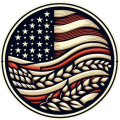Learning how to draw a nose can be a challenging yet rewarding experience for any artist. The nose is a prominent feature of the face and getting it just right can make a huge difference in the overall quality of a portrait. In this tutorial, we will explore the anatomy of the nose, discuss texture and shading techniques, and provide a step-by-step guide to outline and depth in nose drawing. Whether you are a beginner looking for easy nose drawing tips or an experienced artist seeking to improve your skills in drawing realistic noses, this guide has something for everyone.
Main Points
- Understanding the anatomy of the nose
- Creating texture and shading for a realistic look
- Step-by-step guide for drawing the outline of the nose
- Adding depth and dimension to the nose drawing
Understanding Nasal Anatomy for Drawing Realistic Noses
When it comes to drawing realistic noses, understanding the nasal anatomy is crucial. A realistic nose drawing requires attention to detail, and an understanding of the underlying structure of the nose. In this tutorial, we will explore the key aspects of nasal anatomy to help you create more lifelike nose drawings.
Key Points to Consider:
- how to draw a nose: Understanding the shape and structure of the nose is essential for drawing it realistically.
- nose drawing tutorial: Following a tutorial that breaks down the step-by-step process of drawing a nose can be extremely helpful.
- step by step nose drawing: Breaking down the drawing process into steps can make it easier to grasp and execute.
By grasping the intricacies of nasal anatomy, you’ll be able to create more realistic and engaging nose drawings. Stay tuned for our in-depth tutorial on how to draw a nose with attention to detail!
Mastering Texture Techniques for Portraying Realistic Noses in Art
When it comes to creating lifelike artwork, mastering the texture techniques for portraying realistic noses is essential. Whether you are a beginner or an experienced artist, understanding the intricacies of nose drawing is crucial for your artistic journey. In this guide, we will explore easy nose drawing tips and sketching techniques that will help you in drawing realistic noses with precision and detail.
Understanding the Anatomy of the Nose
Before diving into texture techniques, it is important to have a solid understanding of the anatomy of the nose. The nose is made up of various contours, cartilage, and bone structures that give it its unique shape and texture. By studying the different parts of the nose, such as the bridge, nostrils, and tip, you can better capture its realistic appearance in your artwork.
Texture Techniques for Realistic Noses
One effective texture technique for portraying realistic noses is utilizing shading and highlighting to create depth and dimension. Pay close attention to the light source and use a range of values to depict the subtle curves and planes of the nose. Additionally, incorporating fine lines and details can add to the overall texture, making the nose appear more lifelike.
| Texture Technique | Description |
|---|---|
| Shading and Highlighting | Utilize varying values to create depth and dimension. |
| Fine Lines and Details | Incorporate intricate details to enhance the texture of the nose. |
By incorporating these texture techniques into your artwork, you can elevate the realism of your nose drawings and bring your artistic vision to life. With practice and dedication, you can master the art of portraying realistic noses with confidence and precision.
Creating a Detailed Outline for Realistic Nose Drawings
When it comes to creating realistic nose drawings, having a detailed outline is essential. To achieve this, start by studying the anatomy of the nose and understanding its structure. Pay attention to the shape, size, and placement of the nostrils, as well as the bridge and tip of the nose. Use shading and highlights to add dimension and depth to your drawings, and consider using different nose art techniques such as cross-hatching and blending to create a lifelike effect.
Key Points:
1. Study the anatomy of the nose
2. Pay attention to shape, size, and placement
3. Use shading and highlights for dimension
Exploring Depth and Shadows in Nose Drawings
When it comes to drawing realistic noses, understanding depth and shadows is crucial. Achieving a 3-dimensional look requires mastering the art of shading and highlighting. By carefully studying the anatomy of the nose, artists can accurately capture the structure, form, and texture of this facial feature.
Key Considerations for Creating Depth in Nose Drawings
- Study the anatomy of the nose: Understanding the underlying bone and cartilage structure is essential for creating realistic drawings.
- Master shading techniques: Utilize a range of shading techniques to depict the subtle shadows and highlights of the nose.
- Pay attention to texture: Capturing the texture of the skin on and around the nose adds to the realism of the drawing.
By paying attention to these key considerations, artists can elevate their nose drawings to a new level of realism.
Perfecting the Proportions of the Nose in Art
When it comes to creating lifelike and expressive portraits, perfecting the proportions of the nose is crucial. The nose plays a key role in the overall balance and harmony of the face, and getting it right can make or break a piece of art. Artists must pay close attention to the proportions, angles, and shapes of the nose in order to capture the true likeness of their subjects.

